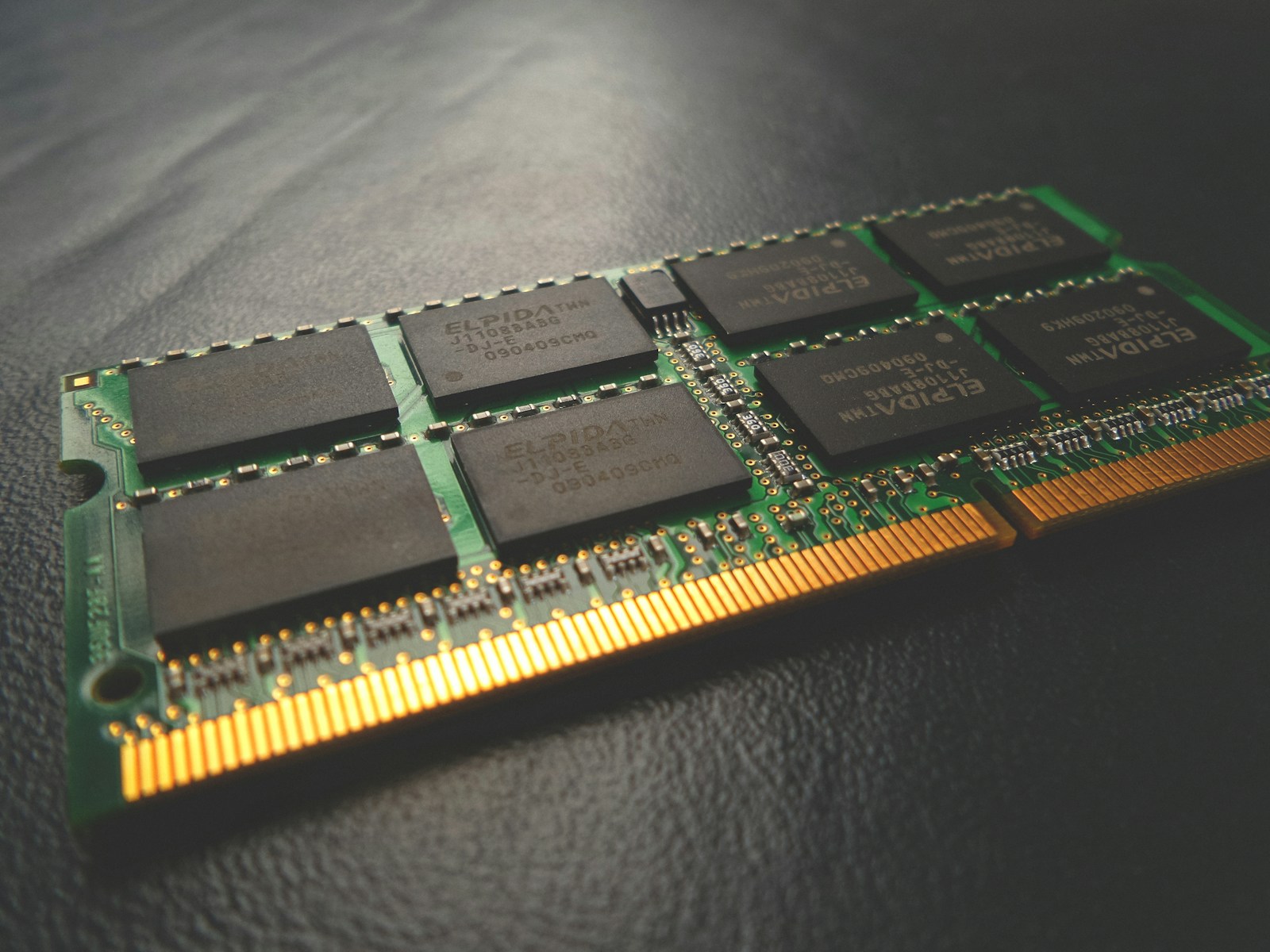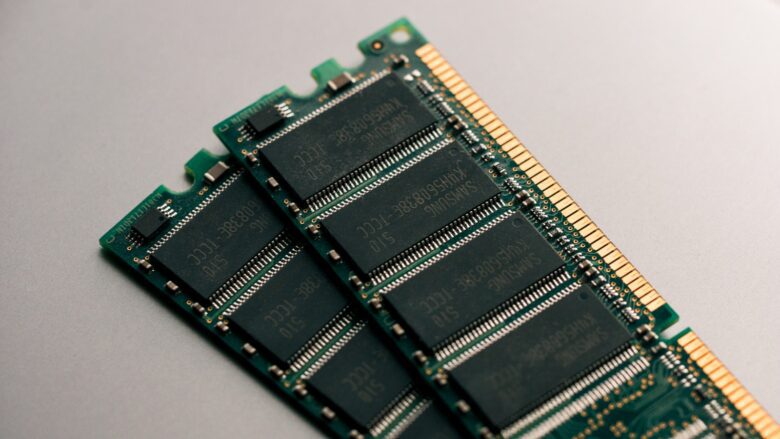RAM, or Random Access Memory, is the unsung hero of our computer systems. While processors and graphics cards often get all the glory, it’s RAM that quietly plays a crucial role in keeping our machines running smoothly. From multitasking to gaming, efficient RAM utilization can make or break our computing experience. That’s why advancements in RAM technology are always greeted with excitement and anticipation.
Today, we find ourselves at the cusp of another significant evolutionary leap in RAM technology as DDR5 takes center stage. It promises not only faster data transfer speeds but also improved power efficiency and expanded capacity. For those who crave maximum performance from their computers or seek an edge in competitive gaming, upgrading from DDR4 to DDR5 presents an enticing opportunity.
In this article, we will delve into the intricate world of DDR4 vs. DDR5 memory modules: what sets them apart, how they differ in technical specifications and performance capabilities, and ultimately whether it’s time for you to set your sights on embracing the next generation of RAM technology. So buckle up as we embark on this technological journey together – a deep dive into the captivating realms of DDR4 versus its successor: DDR5!
Overview of DDR4 Technology
DDR4 is the fourth iteration of double data rate synchronous dynamic random-access memory (SDRAM) technology. It was introduced in 2014 as a successor to the popular DDR3 RAM. One of the primary features of DDR4 is its increased operating speed, allowing for faster data transfer rates and improved overall system performance.
In terms of specifications, DDR4 RAM modules operate at lower voltages compared to their predecessors, resulting in reduced power consumption and improved energy efficiency. This not only contributes to longer battery life in portable devices but also reduces heat generation, helping to maintain a cooler operating environment for desktop computers.
The introduction of DDR4 also brought about an increase in capacity options, with larger memory modules becoming available. These higher capacities allow users to handle more demanding applications like video editing or running multiple virtual machines simultaneously without experiencing significant performance degradation.
However, while there were notable improvements with DDR4 technology, there were still areas where further enhancement was desired but not fulfilled by this generation. For instance, latency remained relatively unchanged from DDR3 levels despite advances in speed and bandwidth. Additionally, some enthusiasts expressed disappointment over the lack of widespread adoption for ECC (Error-Correcting Code) support on standard consumer-grade motherboards—a feature that can help mitigate potential data corruption issues.
Nonetheless, overall DDR4 has been a significant leap forward regarding memory technology advancements—delivering faster speeds alongside better power efficiency and increased capacity options. But as computer hardware demands continue to evolve rapidly—with new technologies emerging—it became clear that there was room for even greater innovation beyond what had been achieved with DDR4 alone.
Introducing DDR5 Technology
DDR5 is the next generation of RAM technology that brings with it a host of advancements and improvements over its predecessors, including DDRAe and LPDDR variants. One of the key areas where DDR5 stands out is speed. With higher clock speeds than DDR4, DDR5 allows for faster data transfer rates, resulting in improved system performance and overall responsiveness.
Capacity is another area where DDR5 shines. The new standard supports larger memory modules, allowing for greater memory capacity per module. This means that users can now have access to more RAM in their systems, enabling them to handle resource-intensive tasks such as gaming or video editing more efficiently.
Bandwidth utilization has also received significant upgrades with DDR5. By incorporating double the number of banks compared to its predecessor, DDR5 increases read and write efficiency by simultaneously accessing multiple banks at once. This results in better data throughput and reduces latency when accessing large amounts of information from memory.
In addition to these enhancements, voltage requirements have been optimized with DDR5 technology. Thanks to improved power management algorithms and lower operating voltages (1.1V compared to 1.2V on average for previous generations), users can experience reduced energy consumption while still enjoying high-performance computing.
Overall, the introduction of DDR5 technology represents a major leap forward for RAM standards with substantial gains in speed, capacity, bandwidth utilization, and power efficiency. As computer hardware continues to evolve rapidly, upgrading to DDR5 offers an exciting opportunity for individuals seeking enhanced performance capabilities without compromising on energy efficiency
DDR4 vs DDR5 Performance Comparison: Benchmark Results
When it comes to measuring the true performance capabilities of DDR4 and DDR5 memory modules, benchmark tests are invaluable. These tests allow us to quantify the differences between the two technologies and highlight how upgrading to DDR5 can provide tangible benefits in various scenarios.
| Aspect | DDR4 | DDR5 |
|---|---|---|
| Operating Speed | Increased operating speed for faster data transfer rates and improved system performance | Higher clock speeds allowing for faster data transfer rates and improved system performance |
| Power Efficiency | Operate at lower voltages, resulting in reduced power consumption and improved energy efficiency | Improved power efficiency with lower operating voltages, contributing to decreased power consumption and generating less heat during operation |
| Capacity | Increase in capacity options, with larger memory modules becoming available | Supports larger memory modules, allowing for greater memory capacity per module |
| Bandwidth Utilization | – | Increase in read and write efficiency by accessing multiple banks simultaneously, resulting in better data throughput and reduced latency |
| Error Correction | Error-Correcting Code (ECC) support on standard consumer-grade motherboards not widely adopted | Enhanced ECC algorithms that can detect and correct multi-bit errors, ensuring greater overall reliability in storing and retrieving data |
| Compatibility | Widely adopted with existing motherboards and chipsets | Limited compatibility with existing motherboards and chipsets, requiring new motherboard models with DDR5 slots |
| Cost | Lower cost due to established technology | Higher initial cost due to newer technology and potential need for new motherboard and CPU |
This table provides a comparison of various aspects between DDR4 and DDR5 memory modules.
One such benchmark that showcases the superiority of DDR5 is a multi-tasking test using resource-intensive applications like video editing software or 3D rendering programs. In these situations, DDR5’s increased bandwidth and improved latency management enable faster data processing, resulting in significantly reduced rendering times and smoother multitasking experiences. This means that professionals who rely on demanding applications for their work can expect substantial productivity gains by upgrading to DDR5.
Another key area where DDR5 shines is gaming. Gamers will be delighted to know that high-end games with complex graphics demand optimal system performance for an immersive experience. With its higher clock speeds and larger memory capacity, DDR5 offers gamers quicker loading times, smoother gameplay without frame drops or stutters, and more efficient texture streaming. Whether you’re engaged in intense multiplayer battles or exploring vast open-world environments, upgrading to DDR5 RAM promises a noticeable difference in game responsiveness.
The advantages of DDR5 extend beyond professional applications and gaming as well; industries such as artificial intelligence (AI) research, machine learning (ML), big data analytics, and scientific simulations – all stand to benefit from this next-generation RAM technology due to its enhanced parallelism capabilities and improved data transfer rates.
DDR4 had been revolutionary when it was introduced years ago but now falls behind against modern demands brought forth by increasingly powerful software applications across various domains.
With cutting-edge benchmarks showcasing its speed improvements across different sectors like creative tasks such as content creation or image manipulation through Adobe Creative Cloud apps benefiting low-level instructions upon browsing Chrome with multiple tabs ready while instant online live stream gaming evolves into real-time MOBA esports only feasible through increased overall computing power potentiality unleashed with DDR5.
The advent marks a stepping stone, allowing users from all walks of life to expect greater system capabilities and faster response times even in the most demanding scenarios. So whether you’re a professional working with resource-intensive applications, an avid gamer seeking lag-free gameplay, or someone in need of powerful hardware for AI research or big data analytics, upgrading to DDR5 is undoubtedly a game-changer.
Data Integrity and Error Correction
DDR4 memory modules employ error correction codes (ECC) to detect and correct errors that may occur during data transmission. ECC is vital, as it helps ensure the accuracy and integrity of stored information. However, DDR4’s ECC capabilities have certain limitations that can leave room for vulnerabilities.
One limitation of DDR4’s ECC is its ability to identify only single-bit errors. While this addresses a significant portion of potential errors, it does not account for more severe issues such as multi-bit flips or bursts of failures within a word or block. These exceptional cases pose a risk to data integrity and can result in silent corruptions that go unnoticed by the system.
This is where DDR5 brings notable improvements to error correction capabilities. With enhanced ECC algorithms, DDR5 memory modules can detect and correct single-bit errors and handle more complex multi-bit flips. This advancement significantly reduces the likelihood of undetected corruption, ensuring greater overall reliability in storing and retrieving data. By incorporating robust safeguards against various types of failures, DDR5 provides a higher level of data protection compared to its predecessor.
Power Efficiency and Thermals
One of the significant advancements in DDR5 technology is its improved power efficiency. Compared to DDR4, DDR5 modules have been designed with a focus on reducing energy consumption while still delivering exceptional performance. This improvement has positive implications for both cooling considerations and reduced power costs.

DDR5 memory modules feature lower operating voltages compared to their predecessors. The reduction in voltage not only leads to decreased power consumption but also contributes to generating less heat during operation. This makes DDR5 RAM more efficient and can result in cooler overall system temperatures.
For enthusiasts and gamers, this means that upgrading to DDR5 RAM may allow for better overclocking potential without compromising stability or thermals. Improved power efficiency also benefits professionals who rely on resource-intensive applications such as video editing or 3D rendering, as it allows them to achieve higher performance levels while keeping their workstation’s temperature under control.
Moreover, the cooler operating temperatures of DDR5 modules have implications for the longevity of other computer components, particularly in devices with limited airflow or compact form factors like laptops. By generating less heat, there is a decreased risk of thermal throttling or premature component failure due to excessive heat buildup in these systems.
In addition to reduced thermals, another advantage of improved power efficiency is lower electricity bills over time. With the growing emphasis on environmental sustainability and cost-saving measures, investing in DDR5 RAM can potentially lead to substantial long-term savings through reduced energy consumption without sacrificing computing performance.
By prioritizing power efficiency enhancements within the design of DDR5 memory modules, manufacturers have made notable strides toward creating a more sustainable and economical solution for modern computing needs. These improvements bring tangible benefits by addressing both thermal concerns associated with high-performance systems and contributing towards greener computing practices overall
Upgrading Considerations: Compatibility & Cost
When considering an upgrade to DDR5 RAM, compatibility is a crucial factor that needs careful evaluation. While DDR4 has been the standard for several years now, not all motherboards and chipsets are compatible with DDR5 modules. Before deciding to switch, it is essential to verify whether your current setup can support the next-gen technology.
Fortunately, major motherboard manufacturers have already begun releasing models that include DDR5 slots. However, it is worth noting that these new motherboards may come at a higher price point compared to their DDR4 counterparts. This additional cost can be attributed to various factors such as increased production costs due to newer manufacturing processes and improved hardware components.
Moreover, upgrading from DDR4 to DDR5 may involve other ancillary expenses beyond simply purchasing the memory modules themselves. It might require investing in a new CPU or a motherboard that supports the latest generation of RAM technology. Therefore, individuals contemplating an upgrade must carefully weigh the cost implications before diving into this next-gen transition.
Considering both compatibility concerns and potential additional costs associated with upgrading provides users with valuable insights when deciding whether or not to make the leap from DDR4 to its more advanced successor-DDR5
Conclusion:
In conclusion, the introduction of DDR5 technology marks a significant leap forward in RAM performance and capabilities. The main differences between DDR4 and DDR5 lie in their respective technical specifications, power efficiency gains, and potential applications.
Firstly, DDR5 memory modules offer higher bandwidth speeds compared to their predecessors. With data transfer rates of up to 6,400 MT/s, users can expect faster loading times for resource-intensive tasks such as gaming or video editing. This increased speed translates into smoother gameplay experiences and improved overall system responsiveness.
Secondly, power efficiency is a key aspect where DDR5 surpasses its predecessor. Thanks to voltage reduction measures and improved circuit designs, DDR5 modules consume less energy while delivering better performance. This means that users can benefit from both enhanced performance and reduced power consumption on systems equipped with DDR5 RAM.
Lastly, the potential benefits of upgrading to newer RAM depend on individual needs or requirements. Gamers will appreciate the increased bandwidth offered by DDR5 for faster load times and smooth gameplay without lag or stutters. Professionals working with large datasets or running resource-intensive software like virtual machines will experience significant productivity gains due to quicker data access speeds provided by DDR5 technology.
Overall, transitioning from DDR4 to DDR5 represents an opportunity for users across various sectors to future-proof their systems while enjoying substantial improvements in performance and energy efficiency. This evolution of RAM technology opens doors for innovation in multiple fields ranging from gaming to artificial intelligence research. It’s clear that DDR4 is slowly being phased out and replaced by the game-changing advantages brought forth by these next-generation modules.
























